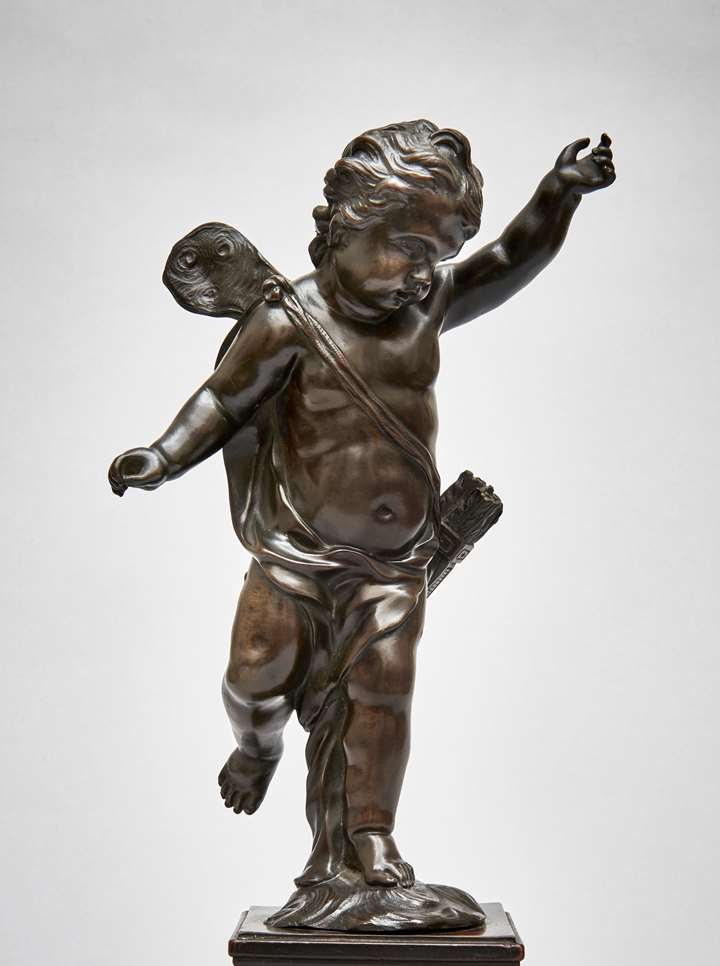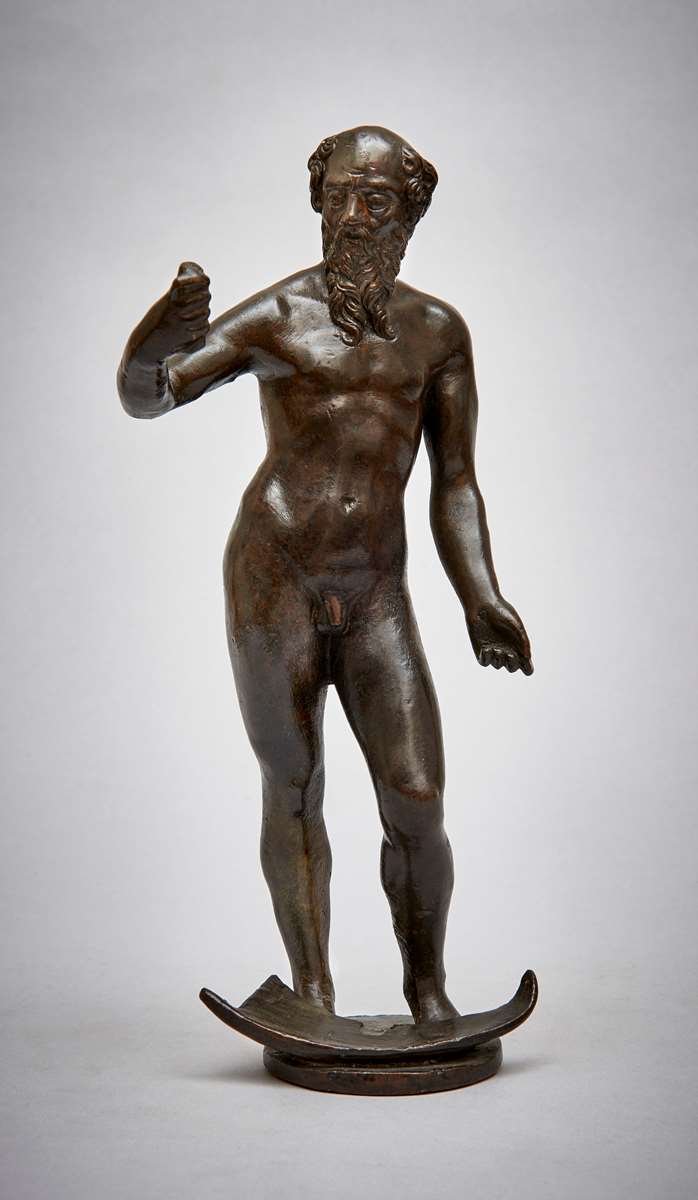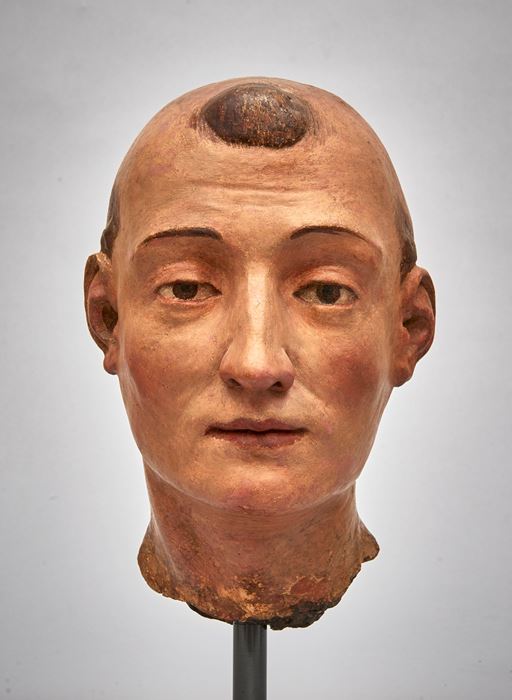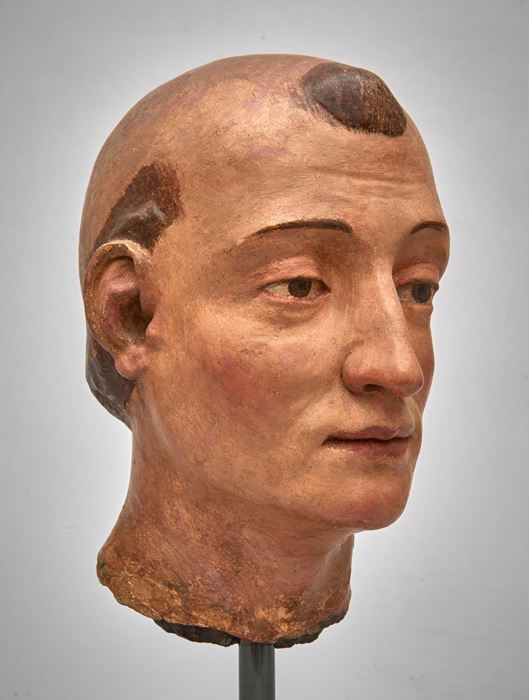Description & Technical information
Condition: Overall, in excellent condition, retaining over three-quarters of the original polychrome. Hole for a halo (lost). Some restoration to the tip of the nose, the top of the head and front tuft of hair.
The head was once part of a larger figure. The boldly modelled contours, smooth broad cheeks, and the heavy-lidded eyes of the present head bear a strong resemblance to those of St John the Evangelist in a painted terracotta group of The Lamentation now attributed to Francesco di Giorgio and Giacomo Cozzarelli (Siena, Santi Giacomo e Niccolò a Quercegrossa), dated to the late 1480s, and to a head of the same saint in another Lamentation attributed to Giacomo Cozzarelli alone (Siena, Basilica dell’ Osservanza).
Cozzarelli, a specialist in terracotta, joined Francesco in the service of Duke Federigo da Montefeltro of Urbino, where he had been since 1475. They had previously worked together in 1471, when they are documented working at the Ospedale di Santa Maria della Scala, in Siena. Cozzarelli took over Francesco di Giorgio’s commissions upon the latter’s death in 1501.
The head discussed here might depict either St Leonard of Noblat or St Lawrence (San Lorenzo in Italian), who are usually depicted as young, clean-shaven men, with tonsured hair and with a small tuft of hair in the middle. St Leonard of Noblat was a French saint believed to have been born in Gaul during the sixth century, and to have been related to the Frankish king Clovis. Leonard was charitable towards prisoners, whose patron saint he became, and was known for liberating captives. Veneration of Leonard became very popular in Italy from the twelfth through the sixteenth centuries. In Tuscany there were at least twenty-two different sites dedicated to him, including churches, chapels and hospitals in and around Siena. He was most commonly depicted in Italy with tonsured hair and wearing a deacon’s dalmatic, or in the habit of the order which had commissioned his image. A polychrome wood sculpture of Leonard, attributed to the Sienese sculptor Domenico di Niccolò “dei Cori,” (1362-1453), dressed as an Augustinian friar, is found in the Diocesan Museum, Pienza. The sculpture, which was once in the Pieve dei Santi Leonardo e Cristoforo a Monticchiello, outside Pienza in Southern Tuscany, probably dates to circa 1415-25. The young face has rounded cheeks similar to those in the head discussed here.
The head might also represent St Lawrence, one of the seven deacons of Rome, persecuted and killed by Emperor Valerian in 258. Although it is commonly believed that Lawrence was roasted alive on a grid iron, which became one of his identifying attributes, he was most likely decapitated. He is widely venerated in Italy, especially in Tuscany, where several towns are named after the saint and many churches and chapels dedicated to him . He was especially favoured by the Medici family, with Lorenzo the Magnificent named after him.
Biographical notes:
Francesco di Giorgio (Siena, 1439 – 1501). ‘Franciescho Maurizio di Giorgio di Martino pollaiolo' was baptised in Siena on 23 September 1439 and died there in November 1501. His grandfather Martino raised and sold chickens, which is why “pollaiuolo” appears in his name. Trained by Vecchietta, (Lorenzo di Pietro) Francesco was active as a sculptor, painter, illuminator, architect, engineer and writer. Only his sculpture is discussed here, the earliest of which is a painted wooden statue of St. John the Baptist, for which he was paid in November 1464 (Museo dell’Opera del Duomo, Siena). From 1477 he was retained by the Dukes of Urbino, and his bronze relief of the Lamentation was originally in the Oratorio della Santa Croce in Urbino (now S. Maria del Carmine, Venice). Other reliefs from this period are the Flagellation (Pinacoteca Nazionale, Perugia) and An Allegory of Discord (V&A, London, plaster cast). In 1488 the Opera del Duomo, Siena commissioned two large bronze angels holding candlesticks and another pair from Giovanni di Stefano, which were not cast until 1491 (Duomo, Siena).
Giacomo Cozzarelli (Siena, 1453 - 1515)
Cozzarelli was a sculptor, painter and architect, who worked closely with Francesco di Giorgio in Siena and Urbino. It can be difficult to distinguish his hand from that of Francesco. He is known for working in terracotta and also as a bronze caster, having supervised the casting of the two Angels by Francesco noted above, and cast cannon for the Sienese commune (1491-95).
Date: 1480s
Period: 1400-1600, 15th century
Origin: Italy, Siena
Medium: Painted terracotta
Dimensions: 25.5 cm (10 inches)
Categories: Sculpture
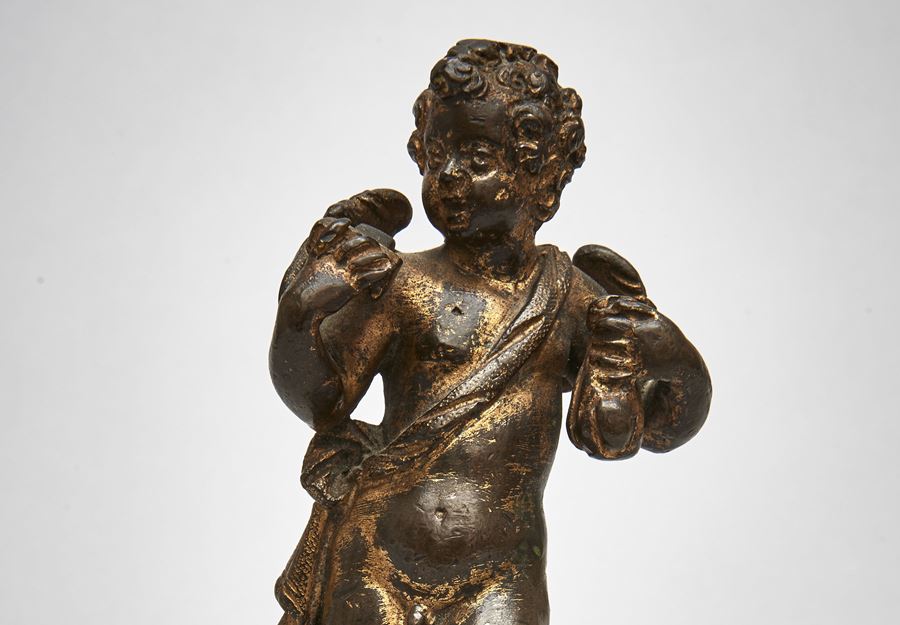
Discover the gallery
Patricia Wengraf
Fine European Bronzes, Sculpture & Works of Art
More Works From This Gallery
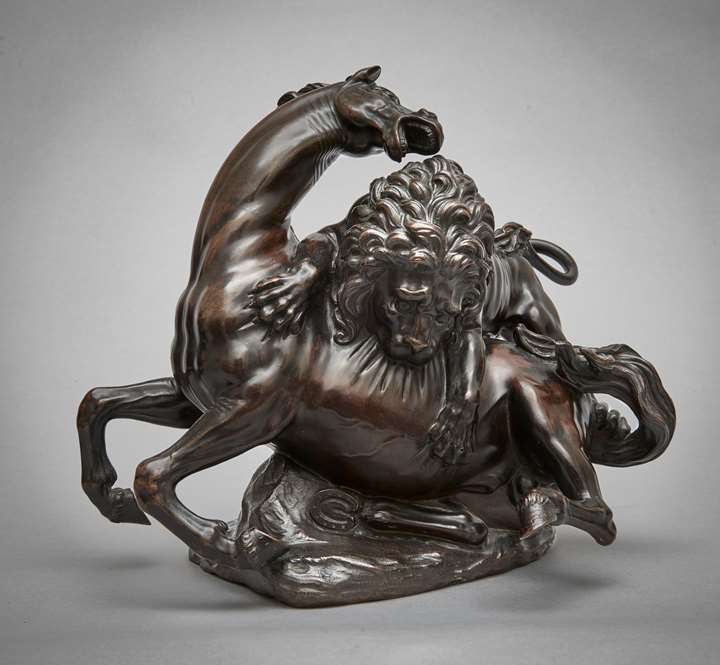
Patricia Wengraf
Lion Attacking a Horse, and Lion Attacking a Bull
Giovanni da Bologna/Giambologna
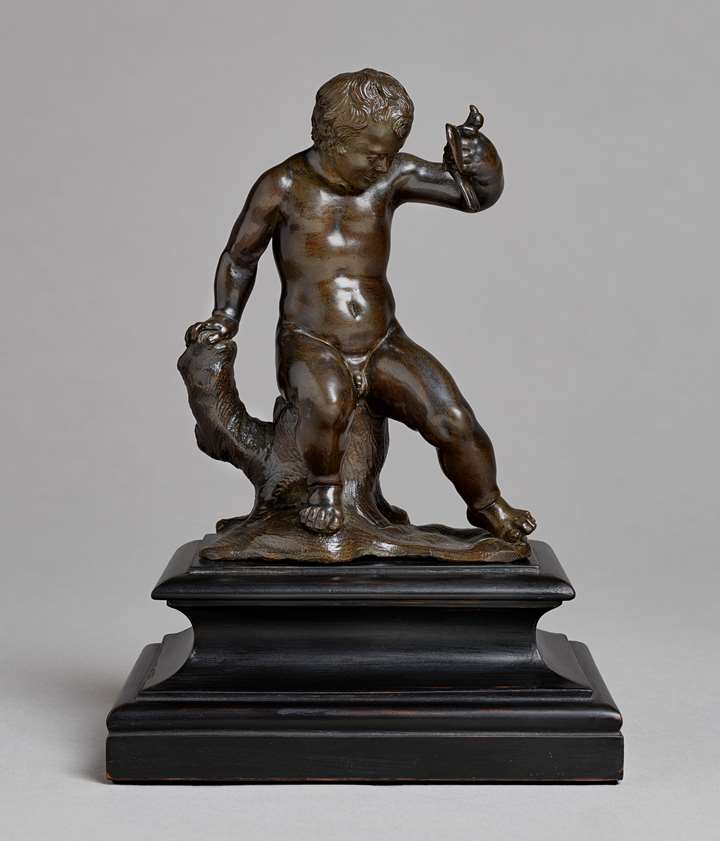
Patricia Wengraf
Boy Seated on a Tree-Stump and Holding a Bird
Gianfrancesco Susini (Florence, 1585 - 1653)
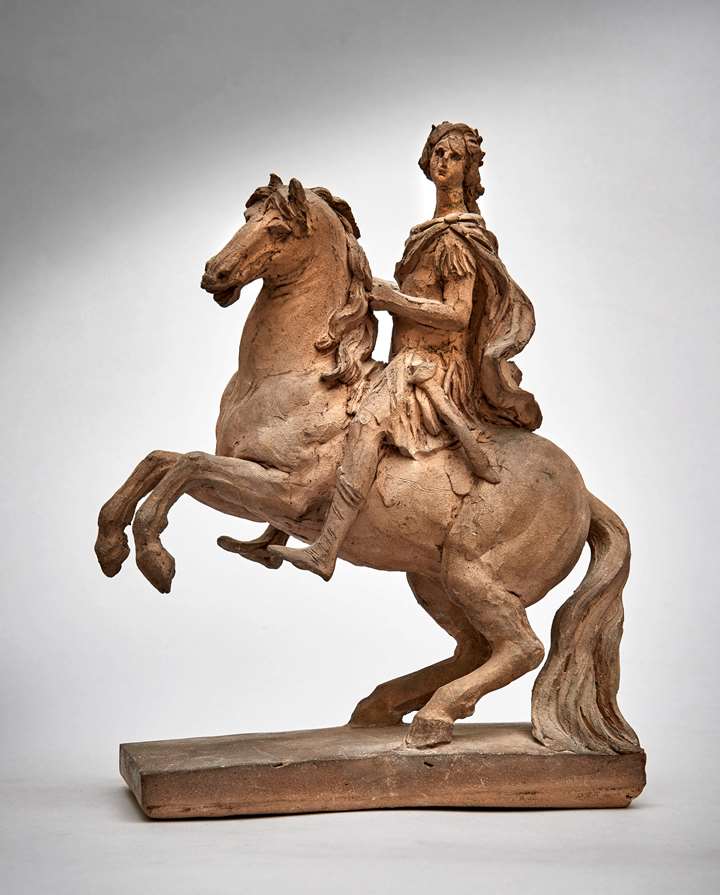
Patricia Wengraf
Adolf Fredrik, King of Sweden
Jacques-Philippe Bouchardon (Chaumont-en-Basigny, 1711 - Stockholm, 1753)
